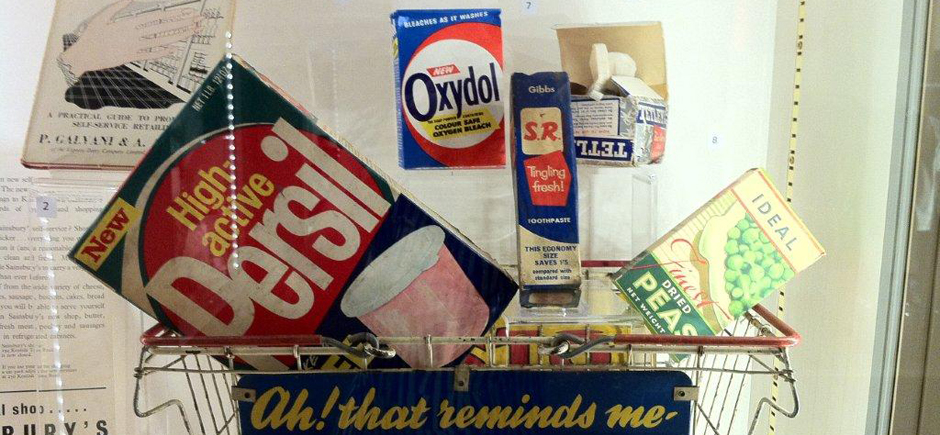“Snap, Crackle and Pop: British Pop Art meets the High Street in the Swinging Sixties”, was a ground-breaking exhibition and a real world first. Never before had a museum put on a show celebrating British Pop Art.
It was quite remarkable really that no-one had pre-empted this show as Britain was there first way back in the 1940s – at this point, I urge you to think of Eduardo Paolozzi’s ‘I was a Rich Man’s Plaything‘ from 1947, which was the first visual artwork to include the word `Pop’ (www.tate.org.uk/art/artworks/paolozzi-i-was-a-rich-mans-plaything-t01462)
My job, as guest curator, was to set loans from the Tate, Wolverhampton, the RCA etc (all top-tier pieces) into their cultural context. On behalf of the many thousands who visited I wanted to answer the questions; What were these bright young things inspired by? What was their world like as youngsters? How did the High Street embrace and translate Pop Art when it had exploded?
So the ground-breaking paintings and sculpture by the UK’s leading Pop Artists were set against a backdrop of key objects from the pre and Post War world, to explore how art and popular culture were united for the very first time in Britain.
“Snap, Crackle and Pop” wasn’t short of iconic works by leading artists – Richard Hamilton, Eduardo Paolozzi, Peter Blake, David Hockney, Clive Barker, Peter Phillips and Joe Tilson – along with key objects from film, fashion, music and advertising – including Diana Crawshaw’s `Baseball Suit’ for Mr Freedom, fashion from iconic brands Mary Quant and Biba, futuristic sunglasses by Oliver Goldsmith and plasticised electronics by Panasonic and JVC.
From 1950s Mechanics Illustrated magazines and Picture Post chatter about Hollywood’s stars, the exhibition delved into a world of 1950s modernity, visions of optimism and the lure of the American Dream. It then looked to the 1960s and early 1970s when Pop exploded, cutting through Britain’s High Street . Barely a dress, a television or a Corn Flakes packet escaped a make-over. The products that had once inspired Pop now had a turn at being influenced by it, and the new teenage audience couldn’t get enough.
It was a pleasure to work with the Lightbox’s head of exhibitions, Michael Regan and Richard Alford, MD of M&C Saatchi, the exhibition sponsors. By unwrapping the Post-War world that surrounded our young British artists, “Snap, Crackle and Pop” took a close-up look at the often humble, hugely ephemeral and everyday objects that inspired them.
The exhibition examined how the Pop Art movement in Britain drew inspiration from 1960s consumerism and how it then went on to exert a wider cultural influence. Key themes explored within the artworks on display were:
- The origins of British Pop Art
- A celebration of the everyday object
- The Cult of the Celebrity
- Youth Culture

